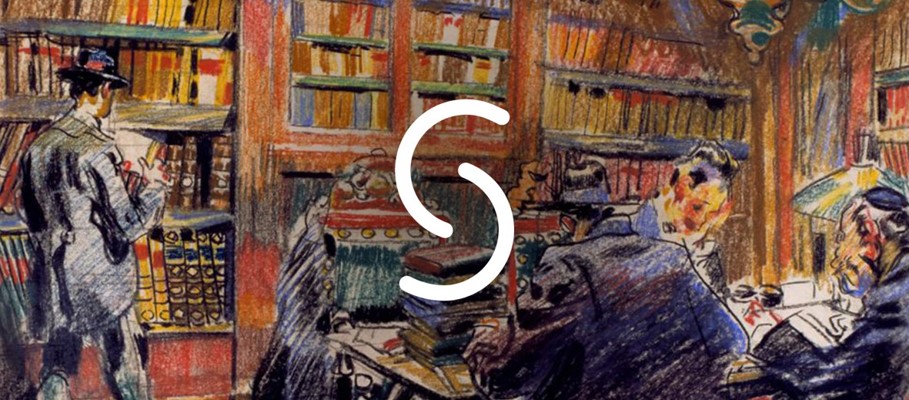-
Country
-
IL
-
Name of institution (English)
-
The National Library of Israel
-
Language of name of institution
-
heb
-
Contact information: postal address
-
Edmond J. Safra Campus, Givat Ram, POB 39105 Jerusalem, 9139002
-
Contact information: phone number
-
00972 074 733 6400
-
Contact information: email
-
reference@nli.org.il
-
Reference number
-
Ms. Heb.
-
Type of reference number
-
Archival reference number
-
Title (English)
-
Manuscripts
-
Title (official language of the state)
-
כתבי יד (Manuscripts)
-
Language of title
-
heb
-
Creator / accumulator
-
The National Library of Israel
-
Date note
-
9th century/20th century
-
Language(s)
-
ara
-
cat
-
deu
-
gre
-
heb
-
lad
-
lad
-
por
-
rus
-
spa
-
yid
-
others
-
Extent
-
609,809 manuscripts
-
Type of material
-
Textual Material
-
Scope and content
-
The Manuscripts Collection of the National Library of Israel holds a large number of valuable handwritten texts and documents from all over the world. The collection is rich in Hebrew manuscripts, but it also contains documents in many other languages, such as Arabic, Aramaic, Yiddish, German, Persian, Italian, Spanish, Russian, Greek, Ladino, and others. Its materials cover a wide range of disciplines and subjects, both religious and secular, including, for instance, works on Astrology, Geography, Geometry, Hebrew language, Kabalah, Mathematics, Medicine, Jewish astronomy, Jewish ethics, Jewish magic, Jewish law, Jewish philosophy, and many others.
The collection includes an illustrated Sidur produced in Lisbon (Ms. Heb. 8°844), and another one also produced in Portugal (Ms. Var. 88). The latter is written in Hebrew transliterated into the Latin alphabet, and contains texts in Portuguese. There can also be found a file containing a commentary on Nicolau Salermo's Antidotarium by the medieval pharmacologist Jean de Saint-Amand and Josué al-Lorqui's Gerem ha-ma'alot, produced in Leiria, in 1479 (Ms. Heb. 8°4013).
The collection also includes several manuscripts produced in Spain, of which the following are some examples. There are two 14th-century Bibles (Ms. Heb. 4°5147; Ms. Heb. 4°780), the latter is dated 1322 and was copied by Moshe ben Menachem Dalburnesh. Among the several kabbalistic works included in the collection, there can be found a 15th-century copy of Joseph ben Abraham Gikatilla's Sha'are Orah (Ms. Heb. 28°7253) and an 18th-century copy of Abraham Cohen de Herrera's Libro de la Caza de la Divinidad (Ms. Var. 106). There are also two illustrated copies of Maimonides' Mishna Torah, one of which was copied by Ephraim (Ms. Heb. 4°1193), and the other dating from the 14th century (Ms. Heb. 4°1193).
The collection contains an 18th-century scroll of Esther illustrated with colourful decorations, presumably produced in the Netherlands (Ms. Heb. 197/14=4 ). There is also a book of poetry (Ms. Heb. 8°3792 ) with translations of poems from Latin, Spanish, French, and Dutch into Hebrew, including a song in Spanish (41a-44b), produced between 1752 and 1789.
From Italy, there is an 18th-century book on the kabbalistic counting of the Omer (Ms. Heb. 8°8033), and a book on Halacha written in Livorno, in 1763 (Ms. Heb. 38°4054). Also noteworthy is a 17th-century prayer book, including prayers for the sick and the deceased (Ms. Heb. 8°972).
The above are only some examples of many other materials associated with the Western Sephardic Diaspora. The National Library of Israel holds numerous manuscripts originally from the above-mentioned locations, as well as from countries such as France, Germany, Greece, and the United Kingdom, among others.
-
Administrative / Biographical history
-
In 1892, B'nai B'rith opened the Midrash Abarbanel Library in Jerusalem, with a mandate to collect "the treasures of Jewish literature." The city’s first free public library, it quickly became a cultural center of the yishuv, and when Zionist physician Dr. Joseph Chasanowich transferred his collection of 10,000 volumes from Bialystok to Jerusalem in 1895, Midrash Abarbanel became a sizeable library. With the establishment of the Hebrew University of Jerusalem in 1925, the library was moved to the Mount Scopus campus, was officially renamed "The Jewish National and University Library" (JNUL), and the scope of its mission and collections was greatly expanded.
During Israel's War of Independence in 1947-48, when access to Mount Scopus was cut off from West Jerusalem, the JNUL collection was smuggled out and dispersed among several buildings in the city but retained its status as the central national collection. In 1953, the Knesset enacted the "Legal Deposit Law," mandating that two copies of every publication in Israel be deposited in the Jewish National and University Library for posterity.
In November 1960, the JNUL moved to the newly dedicated Lady Davis Building (Montreal Canada) on the Givat Ram Campus of the Hebrew University of Jerusalem. This building served as the Library's home for over 60 years. During this period, NLI filled three central roles: the national library of the State of Israel, the national library of the Jewish people, and the central research library of the Hebrew University of Jerusalem in the subject areas of Israel Studies, Jewish Studies, Islamic and Middle-Eastern Studies, and the General Humanities.
The National Library Law was adopted by the Knesset in 2007, officially establishing "the National Library of Israel" and defining its purpose: to collect, preserve, cultivate, and endow treasures of knowledge, heritage, and culture, with an emphasis on the Land of Israel, the State of Israel and the Jewish people.
-
(source: The National Library of Israel)
-
Access points: persons, families
-
Abravanel, Isaac
-
Adret, Solomon ben Abraham
-
Ezra, Abraham ibn
-
Gikatilla, Joseph ben Abraham
-
Kimḥi, David
-
Maimon, Mosheh ben (Maimonides)
-
Nachman, Moses ben (Nachmanides)
-
Shuaib, Joshua ibn
-
Yitzhaki, Shlomo (Rashi)
-
Zacuto, Moses ben Mordecai
-
Author of the description
-
Joana Rodrigues, 2023
